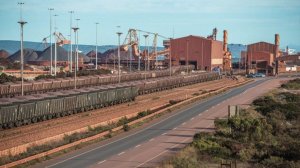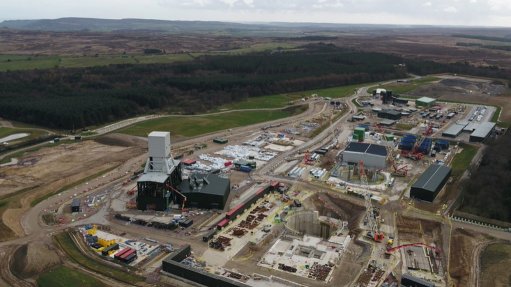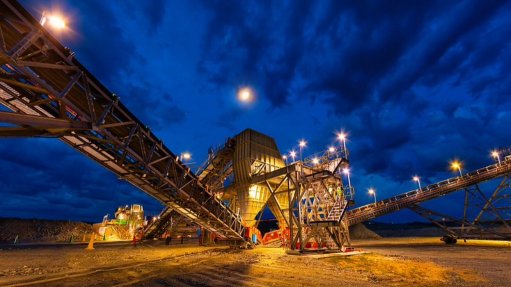Transnet expands manganese corridor for longer trains



TURN THE VOLUME UP The longer-term expansion project will increase manganese volumes from 16-million tons to 22-million tons by 2027/28
Photo by Mary B Papayya
ECONOMIC BENEFITS The expected total cost of the project is R50-million, while the extension is expected to bring in an estimated R4.4-billion a year of foreign earnings into the country
Photo by supplied by Transnet Freight Rail
To boost the South African economy, State-owned rail company Transnet Freight Rail (TFR) has extended its Mamathwane crossing loop – a key manganese rail corridor, originating in the Northern Cape – by 700 m to cater for longer trains of up to 125 wagons.
TFR currently runs 104 wagon trains to Gqeberha and 125 wagon trains to Saldanha, in the Western Cape, with seven trains transporting manganese and iron-ore from emerging miners, and 15 designated to carry manganese.
In doing so, TFR will increase capacities on the line by an additional 1.5-million tonnes a year taking capacity to an overall 17-million tonnes a year.
Scheduled for completion at the end of next month, the total cost of the project is projected to be about R50-million, with TFR COO Bonginkosi Mabaso telling Mining Weekly that the project is within scope, schedule and budget. The project is managed in-house by TFR project teams.
TFR explains that there are bottlenecks on the manganese corridor from Hotazel, in the Northern Cape, to Saldanha Bay at the junction where the line branches off between Hotazel and Sishen, to the marine port in Gqeberha.
TFR says this section of rail network is currently “maxed out” in terms of the number of slots it can accommodate.
Mabaso notes that the loop extension will ensure maximum slot usage on the line between Sishen and Hotazel, thereby allowing for the movement of four additional trains on this constrained section.
Extending the Mamathwane crossing loop will add a significant number of slots between Sishen and Hotazel, improving export efficiency on TFR’s Cape and ore corridors.
TFR states that the extension is expected to bring an estimated R4.4-billion in foreign earnings to South Africa.
The current capacity of 15-million tonnes of ore a year on the rail section from manganese mines as far north as Hotazel to either Gqeberha or Saldanha Bay is expected to increase to 17-million tonnes a year by enabling the trains, with CR17 ore wagons, to operate on it.
“The additional 1.5-million tonnes a year will have a significant impact on the manganese industry and the South African economy, as it will remove manganese volumes from road and place it onto rail,” Mabaso tells Mining Weekly.
This will significantly lower logistics costs, consequently positioning the industry “favourably” in the global commodity markets.
The expansion project also has a longer-term aim of increasing manganese volumes from 16-million tonnes a year to 22-million tonnes a year by 2027/28.
Mabaso adds that emerging miners have also been accommodated by miner Kalagadi Manganese, which made its “state-of-the-art” loading facility available as a common-user facility.
As a result of this materials handling component, no new rail sidings are required on the line to handle manganese volumes currently assigned, he says.
The Kalagadi Manganese common-user facility has been equipped with additional loading equipment to complement the existing rapid loadout station.
Meanwhile, TFR is engaging with industry players to explore areas of collaboration in improving efficiencies; it is also embarking on other capacity creation projects in partnership with key industry players.
“Various projects are in the planning phase to increase manganese exports to 22-million tonnes a year, with six-million tonnes a year planned for Saldanha, and 16-million tonnes a year for Gqeberha,” Mabaso concludes.
Comments
Press Office
Announcements
What's On
Subscribe to improve your user experience...
Option 1 (equivalent of R125 a month):
Receive a weekly copy of Creamer Media's Engineering News & Mining Weekly magazine
(print copy for those in South Africa and e-magazine for those outside of South Africa)
Receive daily email newsletters
Access to full search results
Access archive of magazine back copies
Access to Projects in Progress
Access to ONE Research Report of your choice in PDF format
Option 2 (equivalent of R375 a month):
All benefits from Option 1
PLUS
Access to Creamer Media's Research Channel Africa for ALL Research Reports, in PDF format, on various industrial and mining sectors
including Electricity; Water; Energy Transition; Hydrogen; Roads, Rail and Ports; Coal; Gold; Platinum; Battery Metals; etc.
Already a subscriber?
Forgotten your password?
Receive weekly copy of Creamer Media's Engineering News & Mining Weekly magazine (print copy for those in South Africa and e-magazine for those outside of South Africa)
➕
Recieve daily email newsletters
➕
Access to full search results
➕
Access archive of magazine back copies
➕
Access to Projects in Progress
➕
Access to ONE Research Report of your choice in PDF format
RESEARCH CHANNEL AFRICA
R4500 (equivalent of R375 a month)
SUBSCRIBEAll benefits from Option 1
➕
Access to Creamer Media's Research Channel Africa for ALL Research Reports on various industrial and mining sectors, in PDF format, including on:
Electricity
➕
Water
➕
Energy Transition
➕
Hydrogen
➕
Roads, Rail and Ports
➕
Coal
➕
Gold
➕
Platinum
➕
Battery Metals
➕
etc.
Receive all benefits from Option 1 or Option 2 delivered to numerous people at your company
➕
Multiple User names and Passwords for simultaneous log-ins
➕
Intranet integration access to all in your organisation




















